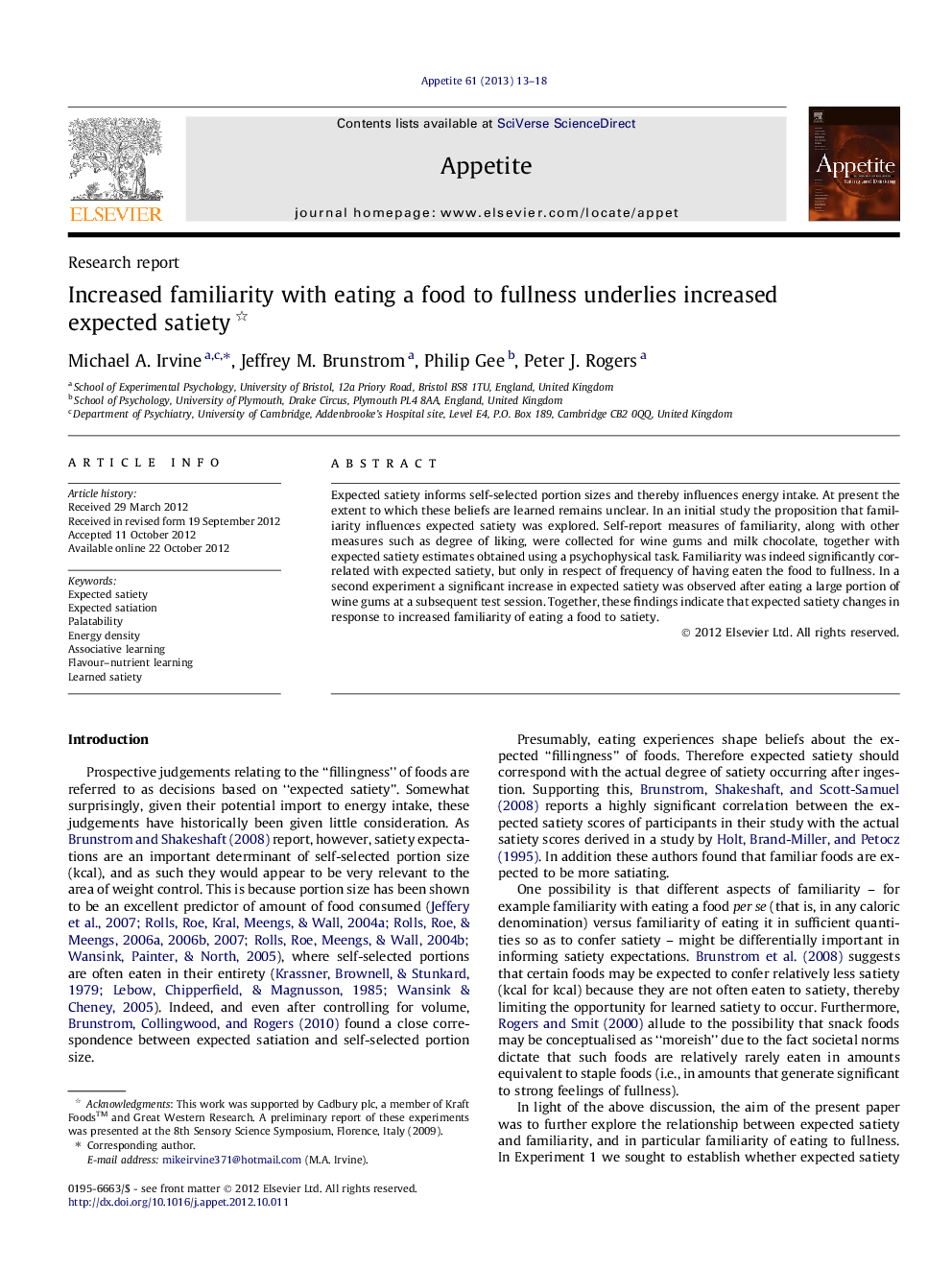| Article ID | Journal | Published Year | Pages | File Type |
|---|---|---|---|---|
| 939724 | Appetite | 2013 | 6 Pages |
Expected satiety informs self-selected portion sizes and thereby influences energy intake. At present the extent to which these beliefs are learned remains unclear. In an initial study the proposition that familiarity influences expected satiety was explored. Self-report measures of familiarity, along with other measures such as degree of liking, were collected for wine gums and milk chocolate, together with expected satiety estimates obtained using a psychophysical task. Familiarity was indeed significantly correlated with expected satiety, but only in respect of frequency of having eaten the food to fullness. In a second experiment a significant increase in expected satiety was observed after eating a large portion of wine gums at a subsequent test session. Together, these findings indicate that expected satiety changes in response to increased familiarity of eating a food to satiety.
► Expected satiety varies significantly across different types of foods. ► Palatable “snack” foods are expected to confer less satiety and satiation. ► Expected satiety appears related to familiarity, not energy density/macronutrients. ► Results indicate there is likely to be a learned basis to satiety expectations. ► Possible link between acquisition of satiety expectations/learned satiety.
